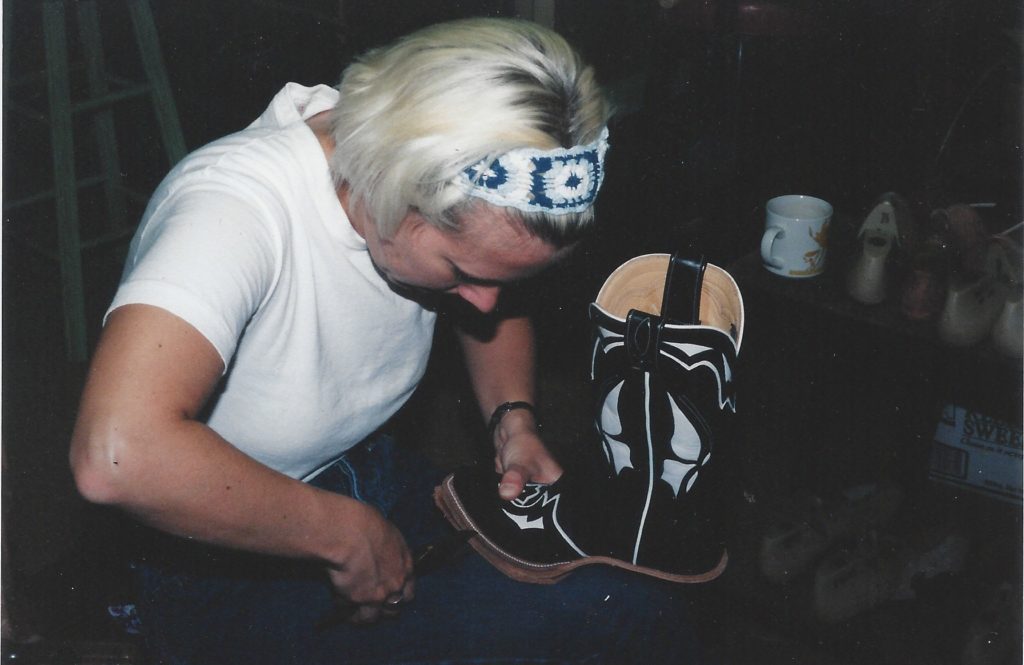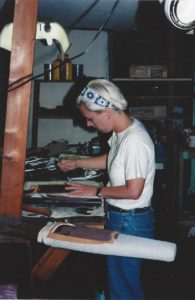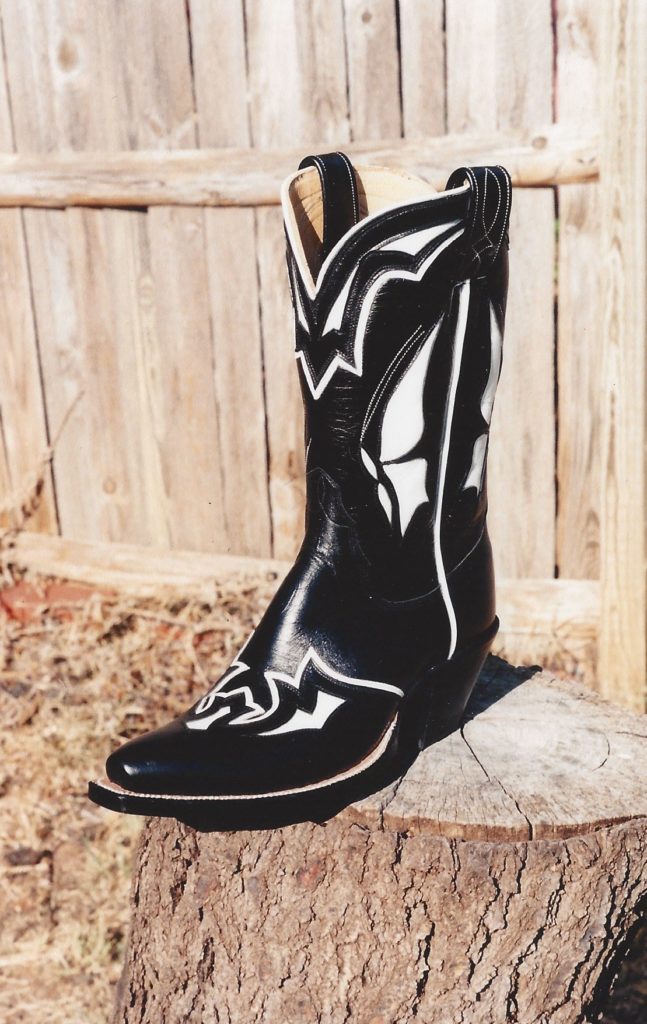
What inspired your love of cowboy boots?
I get asked this over and over. The truth is… I really don’t know. I just love how I feel when I wear cowboy boots. Strong. Steady.
In 1997, I picked up a secondhand copy of Tyler Beard’s Cowboy Boot Book. When I opened it, it was like looking at a treasure map. Something inside me lit up. I wanted to go to those places and meet the people on those pages.
Who were your teachers? What was it like to learn bootmaking?
I spent a month at Tex Robin’s shop in Coleman, Texas. I made two pairs of cowboy boots. I was lucky. I considered Tex a friend before I became his student.
It was just Tex and me in the shop. I learned a lot. Right from the start. Tugging on leather together… so I could feel natural direction of a cowhide’s stretch before I cut my first pieces. I kept online diary when I was there.
Twenty years later, my lasting memories are from the times I sat across the bench from Tex and just watched him work…building boots. I was amazed at how fast he was at almost everything, like flattening a nail for the shank …or shaping one heel, and then another.
I haven’t built a boot since, but I have used what I learned to write about cowboy boots and the craft of bootmaking.
What were some of your early struggles and successes ?
I started my website dimlights.com in 1997 and went to my first Boot & Saddlemaker Round Up in 1998. Nobody knew who I was. Nobody knew what the internet was. When I met a bootmaker, I would put their name and phone number on my bootmaker list. “It’s like an ad in the yellow pages, but customers all over can find it. And it’s free.”
Back then, there were just a handful of women bootmakers and most of the time it was rough going. I would watch their boots get examined, criticized and belittled. “Well, she can stitch a pretty top, but she can’t build a boot.” It is a thing that was only said to women…and I heard it again and again. When men start out you hear things like “yeah… his boots are kinda rough, but if he sticks with it…he’ll be pretty good someday.” You have to be very driven to be a woman bootmaker, because everyone is waiting for you to give up.
My website gave me a place all my own. Tyler Beard had his books and I had the world wide web. Dimlights.com has changed over time…sometimes a diary, sometimes a how-to… sometimes a soapbox.
It was after I wrote my book, Cowboy Boots: The Art & Sole, that I got called a “boot expert.” Marty Snortum photographed over 300 pairs of boots for the book. Bootmakers, collectors — people trusted us with their favorite pairs.
Early successes in bootmaking? The moment I figured out that if I stood on a box, bootmaking at Tex Robin’s place got a lot easier.

And… I dragged that wooden box all around the shop with me when I made my second pair. At the anvil flattening nails. Inseaming stand. Jack Master sander.
Up on top of that box, I was able to look down on the boot I was holding at the belt sander. On the first pair, I held the boot up …pretty much by my nose…once it was against the belt, I couldn’t see a thing with the boot between me and the belt… I just heard the strong hummm of the machine. I went so slow and I prayed a lot.
What advice would you give to bootmakers just starting out?
When I spent time with Tex Robin, he expected me to be bad at just about everything, and I was. You get to be a good bootmaker in 20 or 40 years. The secret to good bootmaking is practice. The key to getting a good fit… beautiful stitching. Practice. You don’t have a minute to lose. Better get at it.
What are your hopes for the future of the craft?
I hope bootmaking becomes more widely recognized as an American art form. And that museum collections exhibit cowboy boots not because of the person who wore them, but for their meaning and beauty as an objects.

The Cowboy Bootmakers. Memories and photos collected by Dana Perrotti, 2019.

